regenerative wool systems
2023
Design program
Design program, 3rd year, semester one, 2023
STUDENTS
Toni Baker
Bella Briggs
Shayana Canning
Hayden Clark
Jacquie Del Pio
Lewis Dilger
Lorena Duarte Hernandez
Amy Hilliard
Kayne Jestrimski
WOOL SYSTEMS

Studio Lead: Vanessa Ward
Tutors: Wendy Fountain & Ali Kerr
In collaboration with Waverley Mills: David Giles-Kaye & Rina Bernabei
Cover artwork: Iman McGregor
Georgia Maginnity
Iman McGregor
Brittany Nebbs
Kim Anh Nguyen
Lily Proctor
Ollie Walker
Mitchell Williams
Mia Woodfall
CONTENTS Wool Innovation Island 08 Tasmerino 12 Communication inquiry 14 The Waverly Mills Project 18 Slow Fashion Zine 22 A Sustainable Model for Football Clubs 24 Tasmanian Wool Studio 26 Regenerative Wool Ag 28 A Helping Paw 32 The Meadow throw 34 Feel the Energy 36 The Locals Project 38 Tasmanian Wool Community Platform 42 Speculative Design Zine 44 Neul. 46 Wool Filtration System 48 Flock 50
What could a regenerative wool system for Tasmania look like?
The Wool Systems of Tasmanian project from the Design program, has been developed in collaboration with Rina Bernabei of Bernabeifreeman, and Waverley Mills: Australia’s oldest working textile mill, located in Launceston. We thank all our stakeholders in the various projects for their time and generosity in sharing their knowledge and experience with our students, making these works possible.
Vanessa Ward, Course Coordinator, Design.
04
Australia is one of the world’s largest producers of wool, and the industry is currently undergoing a period of growth and development with an imperative focus on environment concerns. Individuals and groups across the wool system are looking anew at their practices to understand what is sustainable and what can be regenerative.
Across the wool system there has been a major shift in mindset, from sheep farmers to wool agents and their industry partners.
There is an awareness and understanding that is being driven simultaneously by both ends of the supply chain. From the supply side - sheep farmers, and from the demand sideconsumers.
Farmers are on the front line of climate change, and observe first-hand the need to build resilience into their farms in order to try to safeguard their livelihoods from extreme and changing weather. This is happening gradually as farmers shift to regenerative farming practices.
While consumers are pushing for greater brand accountability on the sustainability of their materials and manufacturing, and increasingly, traceability of their products.
Discussions around ethics are also high on the agenda, which is pushing the wool industry to more transparent models. These tensions, hopes for the future and ideation around what a sustainable wool system for Tasmania is, are all evident in the student work you will see from the Design program.
Shayana Canning
05
SYSTEMS MAP
Wool Systems Map: Toni Baker, Amy Hillard & Mitchell Williams
07
Non-wearables Worsted Processing Woolen Processing Mill Combing Topmaking Spinning Spinning Weaving Yarn Knitting Dyeing Exporting Designer Craft Market Local Apparel Makers Consumer Retailers Wholesalers Blankets Insulation Marketing Branding Recycling End of Life Donating Waste Identity Story Telling Story Telling Wool Materials Market Demand Market Demand International Market International Market Market Demand Market Demand Market Demand Market Demand Use of Product Disuse of Product New Use of Product Shared Use of Product Market Demand Market Demand International Market New Use for Waste
This project is focused on a future vision of the wool system in Tasmania. We have a rare opportunity here to embark on a journey that completely localises the wool system in one state for Australia. We
APPAREL COMPANIES
Designers
currently do not have the facilities to scour and process our own high-quality Merino wool that is grown here with care and sustainable practices. Overseas markets currently have lower price points that have
slowly depleted our independent wool system, with costs to the environment, our culture, and our connection to sourced materials. We have lost the ability for single source products with traceability.
WOOL
08
INNOVATION ISLAND
SYSTEMS
WOOL
WOOL INNOVATION HUB
Craft Market Building Companies
AWTA RWS
By-
Sheep Natural
GROWERS Wool Brokers
Waste Cow Farmers
Products Shearers
Fibre
Footwear Companies
Companies
SELLING
INFRASTRUCTURE
COMMUNICATION
[Connections weighted by system intervention importance]
09
Entrepreneurs RETAILERS End Buyer [Local] Story Tas Brand Tas Experience End Buyer [Tourist]
Skin
leader in wool innovation
Building Companies Exports
Care
Toni Baker Tasmania can become the
SYSTEMS
PRODUCTS CULTURE
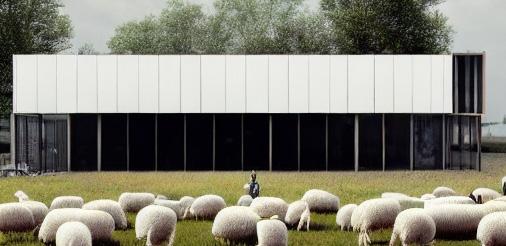



10
WOOL SYSTEMS WOOL INNOVATION ISLAND
(DeepAI, 2023)
(DeepAI, 2023)
(The loop, Katherine Mavridis 2013)
(ArsTechnica, 2021)
Localising the wool system will help the environment, the economy & our identity
Tasmania has a rich passion for local produce, innovation and entrepreneurs. Our culture here shines with community coming together to tackle large problems, empowerment for new businesses and a heart of resilience. This project aims to be a vision and guideline of how we can use these strengths to create a thriving wool system on the island,
with focuses on five main leverage points to do so. Updated infrastructure, where processing machines would be available, increased communication between stakeholders, non-reliance on the auction system, innovative woollen products and a strong connection to Tasmanian identity and story will be the main drivers for this future.
11 Toni Baker
Taking an Ingredient Branding Approach to Tasmanian Merino
Tasmanian merino wool has the potential to be recognised as the best merino wool product in the world. TasMerino has taken this potential and created a comprehensive story of product that calls attention to the farmer, final product, place and processes.
So what is ingredient branding? Ingredient branding is “creating a brand for an ingredient or component of a product, to project the high quality or value added by this ingredient.”
TasMerino is an extension of brand story to businesses that showcase Tasmanian Merino wool in their products. This adds value by creating a personal attachment, a deeper understanding and association to all that goes in to creating Tasmanian merino wool. Consumers are left with a good conscience, top of the line quality and a story to be told when they shop TasMerino.
The TasMerino values are centred around grit and determination, ethical and sustainable practice and giving back to community and land.
12 WOOL SYSTEMS TASMERINO

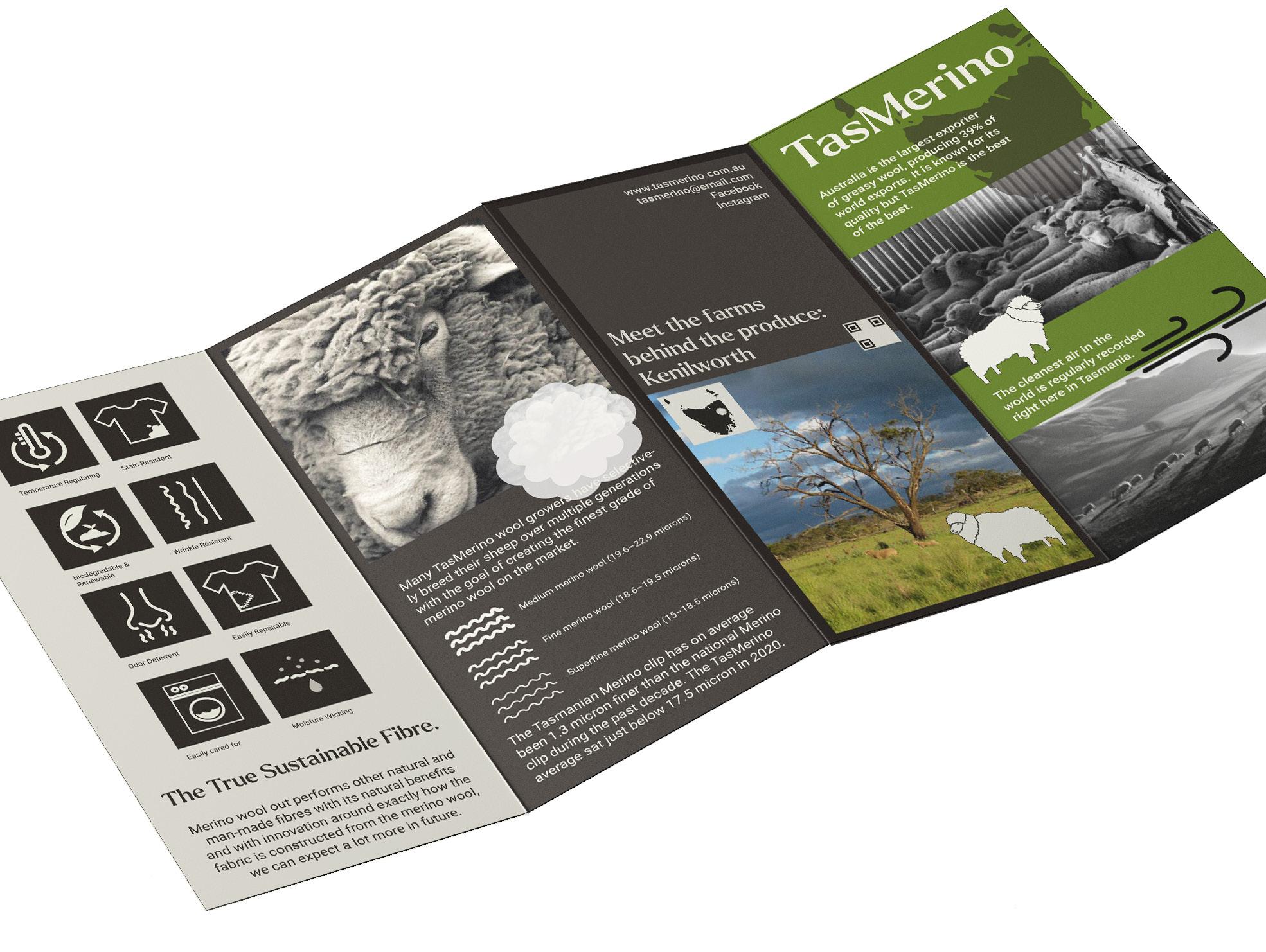
Isabella Briggs 13
WOOL SYSTEMS
Social Network Map
Open Communication Channels
Closed Communication Channels

O p e r a t i o n s / D e p a r t m e n t M a n a g e m e n t
C E O I n - H o u s e D e s i g n e r s E x t e r n a l D e s i g n e r s
g e i g
W a v e r l e y M i l l s F a c t o r y S t a f f T a r g e t A u d i e n c e / C u r r e n t C o n s u m e r s
Good communication involves the conscious implementation of methods and processes aimed at improving workplace efficiency and promoting empathy, understanding, and shared values between groups. There is no magic solution, and a huge part of seamless communication

N e w A u d i e n c e s / P o t e n t i a l M a r k e t
results from mastering the basics.
As shown in the Social Network Map, strong communication is seen between teams that work in close proximity to each other and have a variety of processes for communication in place. You may notice that some stakeholders


are communicating, but the connections need some reforms which will improve efficiency.

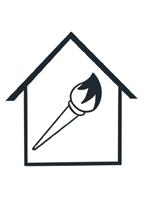
The Actor Network Map seeks to highlight our three key stakeholders that are in most need of communication reforms. It aims to highlight that these groups have shared


14
a
R e t
i l
COMMUNICATION INQUIRY
Actor Network Map
Actors Shared Factors

T e c h n o l o g y
D e s i g n e r s
E x t e r n a l
D e s i g n e r s
I n t e r n a l
D e s i g n e r s
T e c h n i c a l
C o n s t r a i n t s
T i m e
C o n s t r a i n t s
M u t u a l
V a l u e s
U s e r I n p u t /
F e e d b a c k
U s e r
I n t e r a c t i o n s
P r o d u c e r s
E m p a t h y
F a c t o r y
S t a f f
C o s t

W i d e r
C o m m u n i t y
Caption
N e w

A u d i e n c e s
A u d i e n c e
P u r c h a s e s
M a r k e t
T r e n d s
T a r g e t
A u d i e n c e s
15
Shayana Canning
Empathy and understanding are essential elements for strong communication
The Intervention Map elaborates further on the findings of both maps, and showcases how channels could be improved based on insights gained from interviewing and observing individuals, groups, and their methods of communicating.
In an ideal world, our designers and producers have a variety of communication tools and processes in use to ensure that there is mutual understanding and empathy towards each others workloads. For this to happen, the mindset of both the designers as well as Waverley Mill’s staff needs to change. Designers must respect the tradition and process of crafting wool products and producers need to be open to change.
Another area to improve communication is within audiences. To improve this area, a wider audience will need to be connected with. This can be done with a variety of improvements in product design and through the adaptation of a few new technologies that will reduce cost and time constraints. This will allow for the creation of cheaper products but without sacrificing quality.
The Intervention Map shows examples of communication methods which could improve empathy, understanding, and promote an awareness of the values shared between designers and producers, which could also result in benefits for our target audience since the products created may improve in quality.
16 WOOL SYSTEMS COMMUNICATION INQUIRY
Intervention Map
Objective: Encourage communication by improving understanding, empathy and shared values across the board, paying particular attention to the relationship between the designers (both internal and external) as well as Waverely Mills' factory staff.
Determinants
Interventions
Use Of Time & Technology Constraints
Research Into New Technology & Skills
Quarterly Goals & Regularly Updated Skills
Motivation & Accountability
Manager/Team Feedback & KPIS
End Of Project Feedback & Quarterly Goal Setting
Attitudes, Values, & Opinions
Lack Of Understanding & Empathy
Poor Planning & Task Clarity
Tension Caused By Low Communication
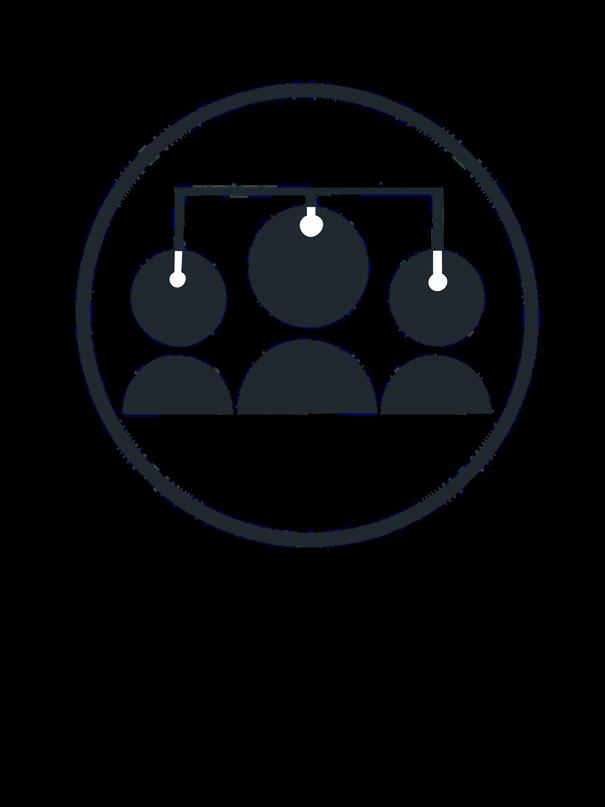
Set Reflective Tasks
Shadowing To Promote Understanding
Assess Information Priorities
After Shadowing Sessions To Encourage Learning
Full Day, Every Six Months
Weekly & Quarterly Goals
Weekly Meetings
Weekly 10-30 Minute Sessions
Implementing Communication
Tools/Processes
Installed & Reviewed After 6 Months
17
Shayana Canning
A Waverley Mills speculative future
SUSTAINABLE TEXTILES
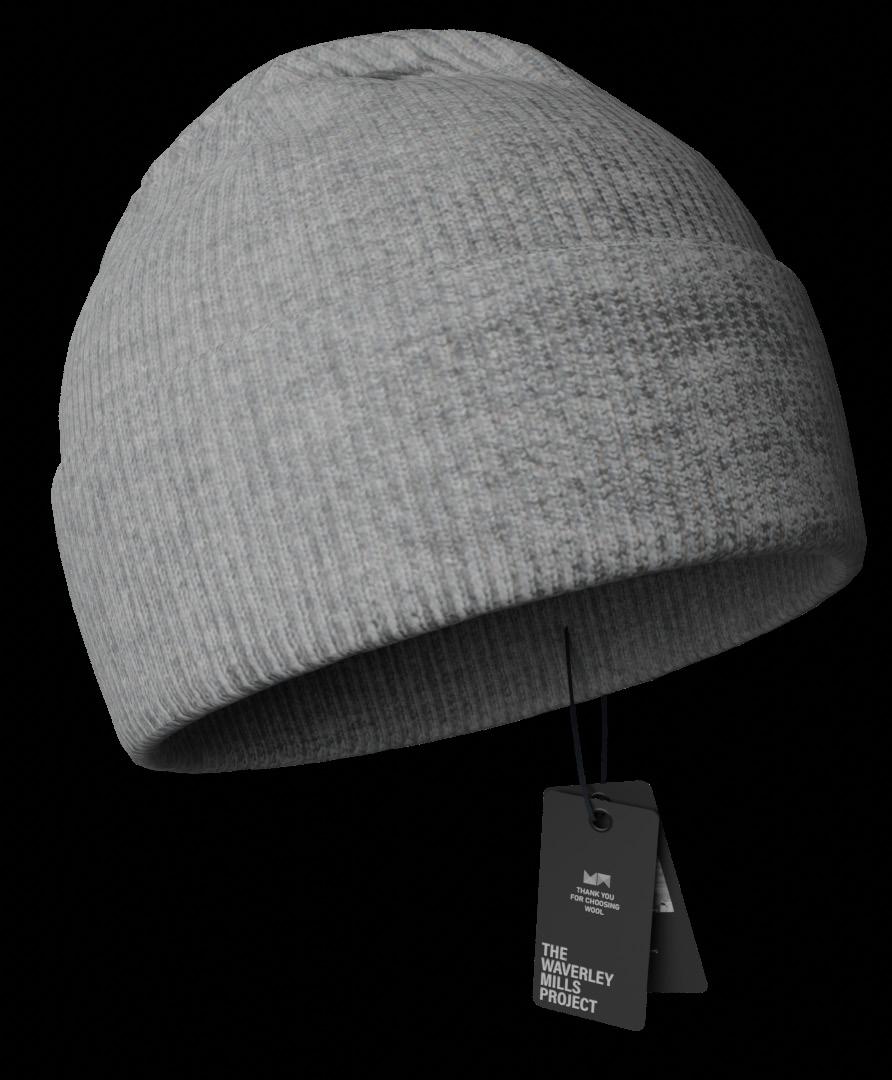
18 WOOL SYSTEMS THE WAVERLEY MILLS PROJECT
THE WAVERLEY MILLS PROJECT
It is the year 2028 and the wool system in Tasmania is booming. Waverley Mills has become the center of this with their new brand identity ‘The Waverley Mills Project’. The Waverley Mills Project has been able to make a real difference educating many on the conscious consumption of textiles.
The Waverley Mills project has created a centralized hub for the wool system in Tasmania, Waverley Mills customers are now able to see how their product was made, who was involved and how they’ve made a difference.
It is a movement that has attracted a whole new generation to buy Waverley Mills products to do their part in keeping textiles out of landfill.

19
Hayden Clark
(Novakova, n.d.)

20 WOOL SYSTEMS THE WAVERLEY MILLS PROJECT
The Waverley Mills Project hang tag connects customers to the sustainable process by which their product was made as well as who has been involved.
This magazine would be free to access on the Waverley Mills Project Website and be updated each season.
Digital renders of clothing create a futuristic edge.

21
Hayden Clark
Caption
The production of fast fashion is having a significant impact on the environment which is worsening.
From surveys and interviews I have undertaken with Launceston consumers I have discovered that the
majority constantly buy new clothes that suits fashion trends, that are quick and convenient to receive, that are bad quality, being overall unethical.
I designed a small pocketbook zine that provides educational

content on fast fashion, strategies consumers can use to better their purchasing behaviours, quick and accessible resources to further research,
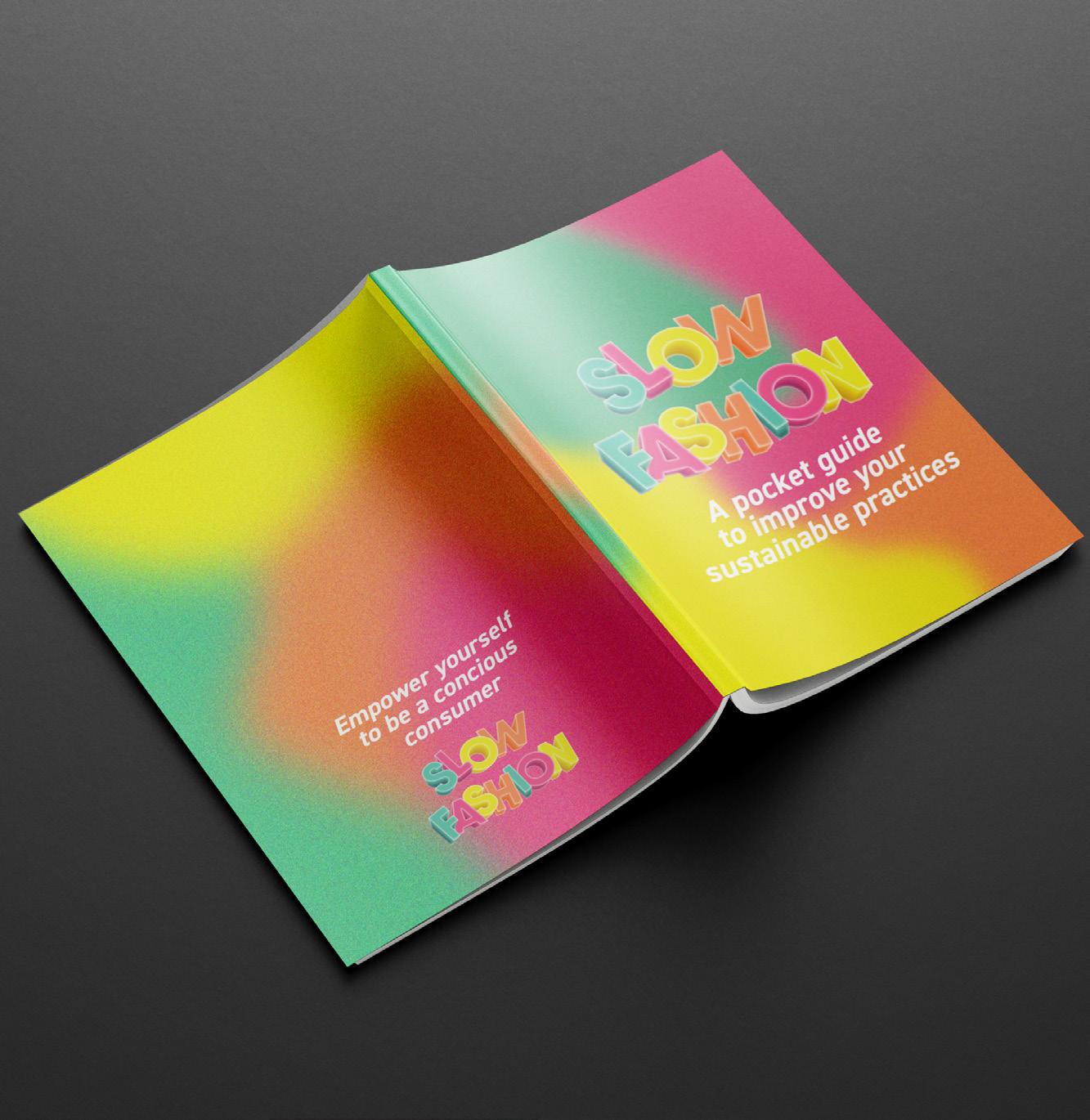
22
SLOW FASHION ZINE
WOOL SYSTEMS
while also promoting local sustainable retail outlets.
Ultimately, the zine aims to communicate to consumers to take action.
 Jacquie Del Pio
Jacquie Del Pio
23
“A pocket guide to improve your sustainable practices”
The League


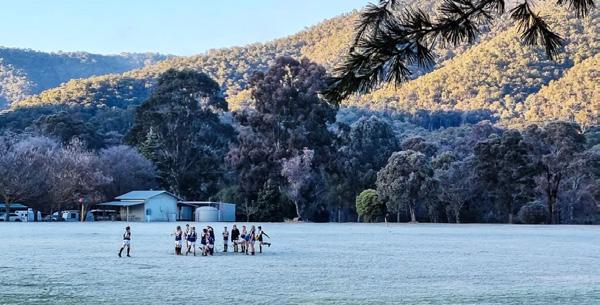


24 WOOL SYSTEMS
A SUSTAINABLE MODEL FOR FOOTBALL CLUBS
Topics for change Grassroots Facilities Environment
A guide to maximising the potential from tackling sustainability through football
Carbon Release Per Year
11,000,000,000t
Temperature Rise
Sustainability is one of biggest issues regarding our planet today; but it is also one of the biggest opportunities.
0.08°C per decade 1.92°C in total
2022 AFL Members
1.19 Million
Sports at every level is heavily impacted by its environment, therefore the transition to net-zero becomes essential. However, sports are also in a unique position where they can become a trailblazer in the fight for environmental
sustainability by becoming more sustainable like other organisation and in doing so can also leverage its influence and platform to create change in the broader community whilst enhancing the environment around themselves to benefit their sports,
25 Lewis Dilger
Within the pages of this zine, readers can explore the process of creating the Tasmanian Wool Studio and starting with an overview of wool processing, craft and industrial tools and looking at diverse wool designers and small businesses worldwide


to understand better what has been done and the possibilities to expand the growing craft market in Tasmania.
The Tasmanian Wool Studio is a project proposal to create a community hub for innovation and cultivate a sense of appreciation for wool craft techniques.
26
WOOL SYSTEMS TASMANIAN WOOL STUDIO
Image credit: (Chemc 2017)
While working in conjunction with the wool industry to enhance the community interest in the wool processing system and the inherent and versatile qualities of wool, leading to new market opportunities.
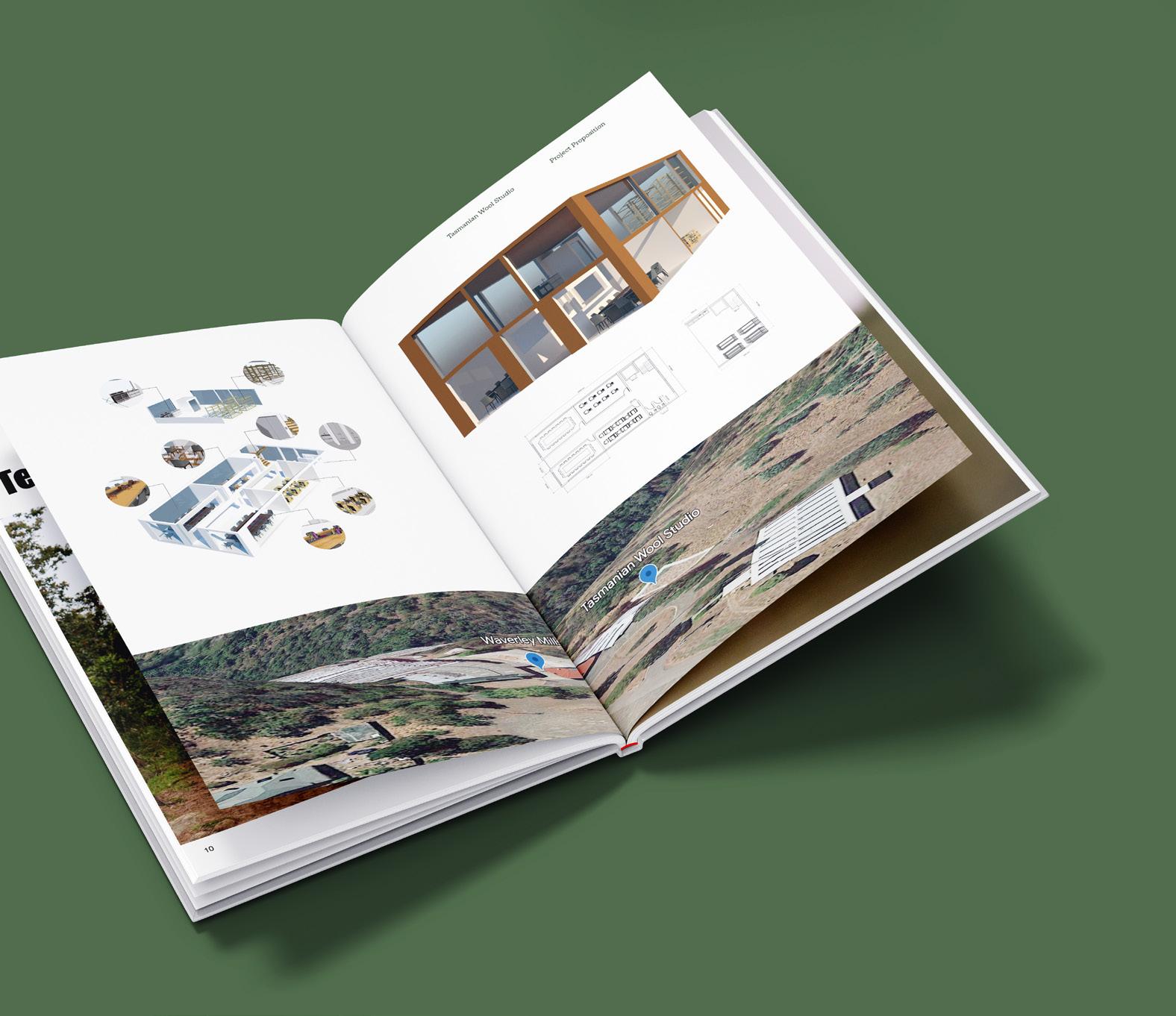

27
Duarte Hernandez
Lorena
Tasmania Wool Studio Zine
Image credit: (Tejidos Rebanca 2023) & ( Schmidli 2019)
CROP ROTATION
Rotating crops will allow time for soil regeneration.
REDUCED TILL
Reduced till will decrease root disruption and carbon release.
SOIL HEALTH
Increased soil health will increase nutrients in crops.
FEED
Utilising resilient and regenerative pastures for sheep feed.
SILVOPASTURE
Increase carbon capture, biodiversity and water retention.
BIODIVERSITY
Creates a resilient landscape and natural pest management.
FENCING
Smaller paddocks and high intensity grazing through appropriate fencing.
GRAZING
Holistic grazing techniques will regenerate pastures quicker.
CROP DIVERSITY
Crop diversity will increase pest and climate resistance.
SHEEP HEALTH
Sheep health is heavily influenced by grazing, lambing and shelter.
SHADE & SHELTER
Utilsing trees on farm will increase shade and shelter for sheep.
PADDOCKS
With smaller and higher regeneration improve.
ROOT
Diverse root systems soil and
WATER
Using water drought improved.
WINDBREAKS
Windbreaks erosion and sheep health.
COVER CROPS
Using cover crops protects the topsoil from damage from rain, wind and sun.
HABITATS
With greater biodiversity, habitats for native wildlife will become available.
CARBON STORAGE
Using proper techniques will capture carbon more effectively.
Regenerative agriculture processes.
28
REGENERATIVE WOOL AG
WOOL SYSTEMS
PADDOCKS smaller paddocks grazing, regeneration will
ROOT SYSTEMS
Diverse and resilient systems improve and water systems.
WATER SYSTEMS proper techniques, retention during drought and flood is improved.
WINDBREAKS Windbreaks reduce and improve health.
Why define regenerative agriculture?
As it currently stands, there is no overarching definition of regenerative agriculture. It is a broad term that depends entirely on the context in which it is applied.
A definition is necessary in order to create certainty and assurance when used, and should reflect the importance of the processes and outcomes that fall under the term.
Why is regenerative agriculture important?
If farming practices continue as they have been, it has been estimated that the earth’s topsoil will be gone in 60 years. If things do not change, there are 60 harvests left. The implementation of these processes is crucial.
The definition
As the result of a rigorous inquiry into the functioning of Tasmanian wool farms, a definition of regenerative farming in this context has been created.
Amy Hilliard
29 from
Regenerative agriculture is the use of processes to mimic a natural system, to ensure land can be preserved for future generations.
REGENERATIVE AGRICULTURE HIERARCHY OF KEY FACTORS
30 WOOL SYSTEMS REGENERATIVE WOOL AG
EROSION PREVENTION
IMPROVING SOIL HEALTH INCREASE BIODIVERSITY SHEEP HEALTH
The processes that are defined as regenerative are all deeply connected - change how one factor functions, it will impact several others, which in turn will impact the entire system.
The implementation of regenerative practice can be gradual, and as a result the benefits upon the land and those that keep it will grow.
31
Amy Hilliard
Deadstock current y unable to be used
Winter is a notorious period in Tasmania; the crisp, cold air, snow in the mountain ranges, and howling, ice-fresh winds. We as humans know how to keep ourselves warm and safe during this time, but stray, runaway feline friends don’t have this same luxury.
Shelters and charities at any given point throughout the year put out requests for donations of multiple
kinds. After thoroughly investigating multiple types of shelters, donations consisting of warm clothing and goods are often the most heavily requested to assist during these harsh times.
The main objective of this design collaboration is to lower the amount of woolen deadstock that Waverley Mills is keeping on-site to allow them to be
more flexible with warehouse storage and spacing.
32 WOOL SYSTEMS A HELPING PAW
This design collaboration would involve all key stakeholders and gather everyone together for a single day to show off the blankets and products made as a Just Cats shelter/donation drive day. Your paragraph text
Blankets go to the shelter for use
WAVERLEY MILLS
Charity knitting groups
Just
Collaborative Day
for kn tting, food and adoption
Turnover the Waverley deadstock into blankets and other warm wearables and covers to go to the shelter
Cats
held


33
Kayne Jestrimski
Ensuring that the feline residents of
Just Cats will be warm and safe this
coming winter
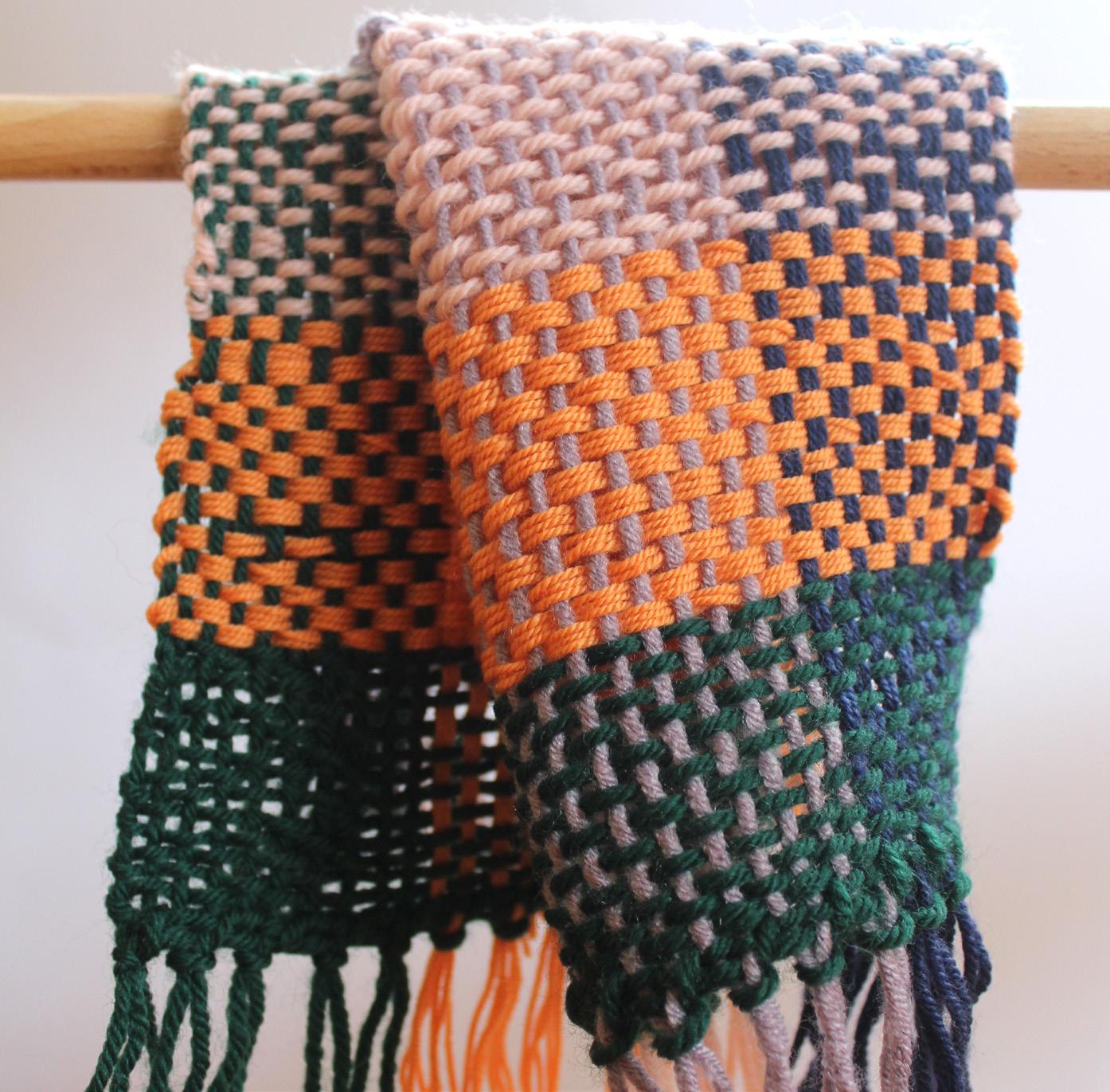
34
WOOL SYSTEMS THE MEADOW THROW
A modern heirloom, destined to be shared generation to generation.
‘The Meadow Throw’ project explores how Waverley Mills story can be woven through a product and its packaging. Promoting sustainable consumer habits through creating value and connection between a product and a user.
Through trend and brand analysis, supported by usercentric research, four key factors emerged as essential pillars supporting this product: the merge of tradition and modernity, vibrant colors, sustainability, and comfort.
Through research of traditional practice and it role in telling the story, my design began to evolve into an exploration of narrative through visual and tactile senses; felting, brush felting and weaving. Inspired by the ‘I made your clothes’ campaign, I supported this through packaging including a story card and tag as a way to tell the story and personality of each maker.
35 Georgia Maginnity
Branding of an energy efficient system
An identified constraint in Waverley Mills system is where the Mill will continue to source clean energy.
When further investigated it was discovered an established regenerative energy efficient wool system was already in place.
This project aims to improve the communication of Waverly Mills’ regenerative system to an external audience.
Filling a want and need to share their system and values to promote a regenerative practice to their customers.
Inspire peer companies to implement a proven regenerative energy efficient practices across Tasmania.
Communicate and promote a regenerative energy efficient system through branding.
36 WOOL SYSTEMS FEEL THE ENERGY


37 Iman McGregor
The Locals Project
The current wool system of Tasmania is unable to accommodate the processing steps necessary within wool production. Due to lack of facilities and required machinery to clean and spin wool, Tasmanians are having to send their wool internationally or interstate to be cleaned. How authentic can pure Tasmanian wool become if its being sent out of the state to be processed? Waverley Mills, located in the north of Tasmania were once able to facilitate scouring methods on site before the industry crash and processes changed due to economic crisis. The mill is obtaining new
machinery that has been purchased for other required steps within the processing system like spinning fine enough yarn to be used for hand knitting, another demand not being met for Tasmania’s industry. The Local’s Project is a community of advocates proposing the inclusion of processing machinery and infrastructure within the state. Therefore adding sustainability to the Tasmanian wool system.
38 WOOL SYSTEMS
PROJECT
THE LOCALS
The Local’s Project is a community effort of Tasmania’s wool industry advocates who are proposing the addition of scouring and spinning facilitation and infrastructure for Tasmania’s wool system creating a better and self sustaining industry.

39 Brittany Nebbs
The Local’s Project, Volume 1, 2023.
- The Local’s Project. (2023)

40 WOOL SYSTEMS THE LOCALS PROJECT
‘Tasmanian’s wanted their voices to be heard - The Local’s Project, 2023.
The Local’s Project, Volume 1, 2023.
The Local’s Project is a community of advocates proposing the addition of processing machinery and infrastructure to facilitate for the production of wool in the state, adding sustainability to Tasmania’s wool system. With the mill soon being able to conduct spinning methods on site the local’s project propose funding to be contributed
to Waverley from Tasmanian wool industry people to contribute toward the mill becoming a central processing hub for Tasmanian growers and sellers. Offering scouring, spinning and dyeing facilities will allow more wool to stay within our state and will fill the holes that currently lay within the broken system, and adding more industry demand to the usage
The Local’s Project - The Wool System of Tasmania
of Waverley Mills . The money that is currently being spent on sending wool interstate or overseas would be better used within Tasmania’s wool production.
41 Brittany Nebbs
Digital platform to create and connect community around the
Tasmanian Wool Community is a digital platform built as a connecting space between wool farms, companies, consumers, and tourists who come to Tasmania through wool farm tours.
Tasmanian Wool industry
On this platform, wool businesses can not only promote their products and services but also tell vivid and emotional stories about wool sheep raising in Tasmania where sheep are cared for and treated with kindness and care like friends and children. These stories can receive interaction and commentary from viewers. Through that, the benefits of natural wool, the value of Tasmanian wool and issues of sheep welfare, production ethics, environmental responsibility and sustainability are highlighted and spread widely.
In addition, the community connection also helps tighten the supply chain from farms to factories, and shops due to the convenient space for communication. Moreover, online shopping and booking functions on this platform make it easy for customers and tourists to purchase wool products and experience wool farm tours where they can participate in the sheep farmers’ daily work, stay at the farm space and dine with the local farmers.
Digital Tasmanian Wool Community contributes to connecting chains in the wool industry system from production to consumption and to developing Tasmanian wool industry.
42 WOOL SYSTEMS
TASMANIAN WOOL COMMUNITY PLATFORM
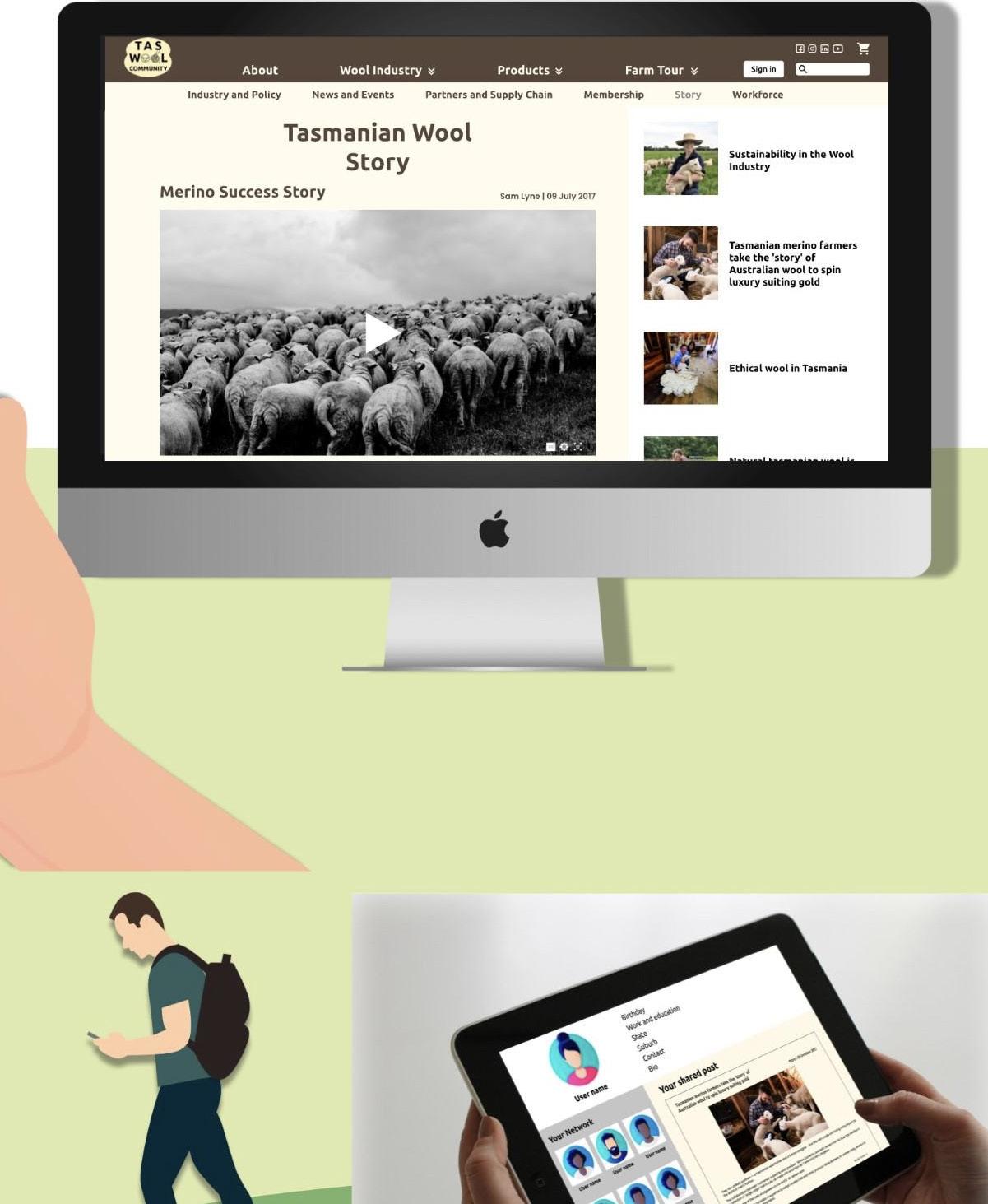
43
Kim Anh Nguyen
Imagining the invisible: the role of curiosity in ecological conservation
The native grasslands of lutruwita/ Tasmania’s Midlands are listed as a global biodiversity hotspot; teaming with life, they are home to an abundance of our island’s irreplaceable native species. Yet these landscapes (and the lifeforms that live and thrive within them) are under threat of being lost forever due to their perceived lack of value as ‘wild’ spaces. Furthermore, their resulting degradation and fragmentation has made it all the more difficult for most of us to experience their beauty.
This research project seeks to facilitate new perspectives of native grassland ecosystems. Through ongoing conversation with ecologists, conservation managers and farmers striving for reciprocity with the land, three things became very clear; our grasslands are disappearing at a very rapid rate; human connection with the land is imperative; and lastly, the drivingforce of beauty and wonder should not be overlooked.
It asks: what if we could experience the grasslands as other species do? Would we feel differently about our own interactions with the land, as individuals and as a species?
44 WOOL SYSTEMS
ZINE
SPECULATIVE DESIGN

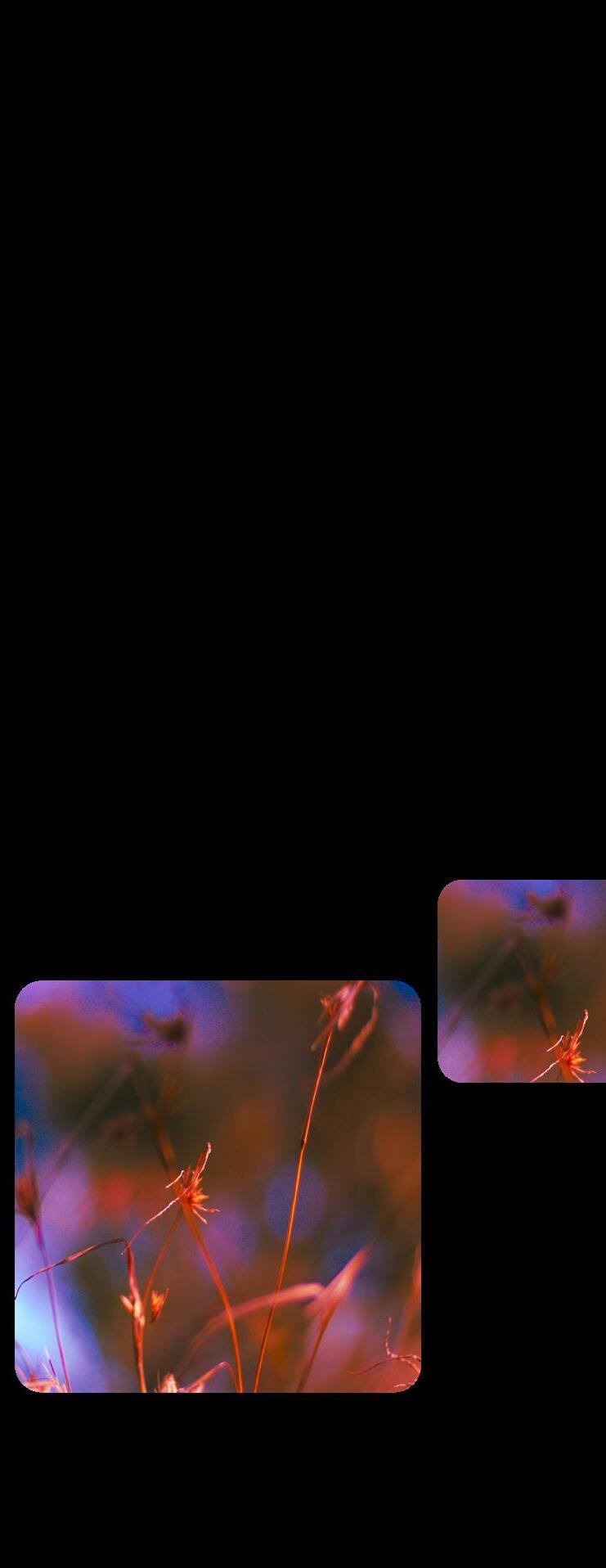 Zooming in, from one ‘reality’ to another.
Zooming in, from one ‘reality’ to another.
45
2.
3.
4.
Lily Proctor
fig 1. fig
fig
fig 5. fig
fig 6.
Tasmania’s wool system produces some of the highest quality merino wool in the world. This want for high quality wool leaves cross-bred wool considered as waste. Neul is a felt prototype which offers a new perspective towards wool materiality. Most felt is made with carded wool, which has a large cleaning, refining and dyeing process. Neul is an
interdisciplinary material with uses within; fashion, object, furniture and spatial design. These felt sheets are cleaned, dried and made by hand, with the aim of achieving sustainable fiber alternative. Neul’s material attributes of being insulative, flexible, soft and lofty, provide limitless possibilities with this material. Neul is not only a standalone
felt prototype, but a blank canvas for using different substrates to create new materials. Neul is a prototype which is the result of iterative design inquiry, weeks of testing, refining and prototyping, an effort to find a use for Tasmania’s unwanted cross-bred wool.

46
NEUL.
WOOL SYSTEMS
bred wool
Neul: a new perspective toward cross-
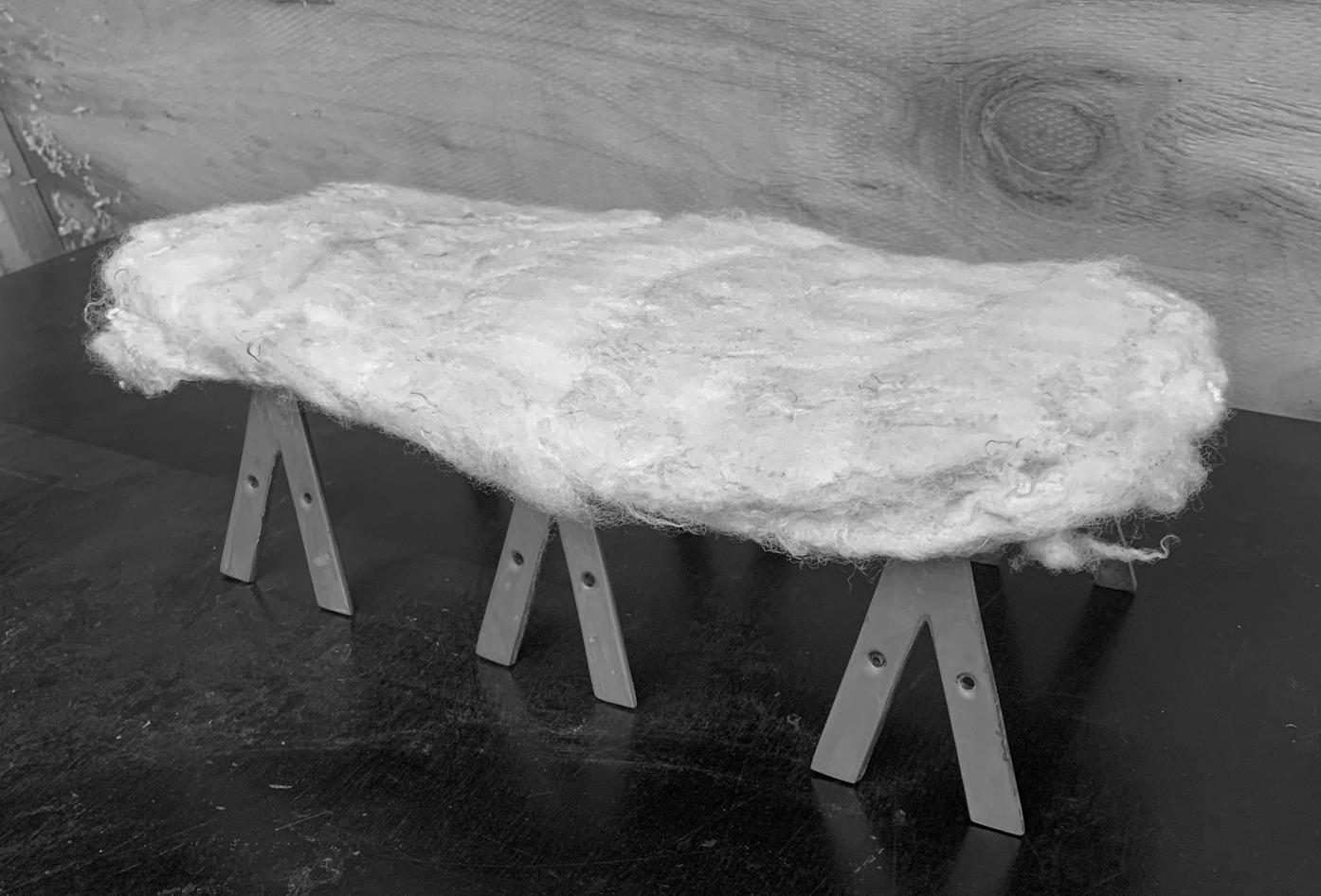
47
Walker
Ollie
Sustainable Use of Crossbred Wool in Filtration Systems

Crossbred wool, a significant by-product of the wool industry, often goes to waste. This project proposes to turn this waste into a resource by using it in environmental filtration systems. By doing so, we can address environmental pollution, create economic opportunities, and foster sustainable practices.
This project showcases the filtration potential of wool, the process of incorporating it into existing systems, and its applications in water and greywater treatment.
48 WOOL SYSTEMS WOOL FILTRATION SYSTEM
Along with the uses pictured here, filtered water from either of these systems also has the opportunity to be re-intergrated into the larger wool production system, from watering the fields the sheep graze on all the way to processes like washing and dyeing the wool.


49
Mitch Williams
Filtering Capabilities
Let’s explore how we can repurpose crossbred wool for a greener future.
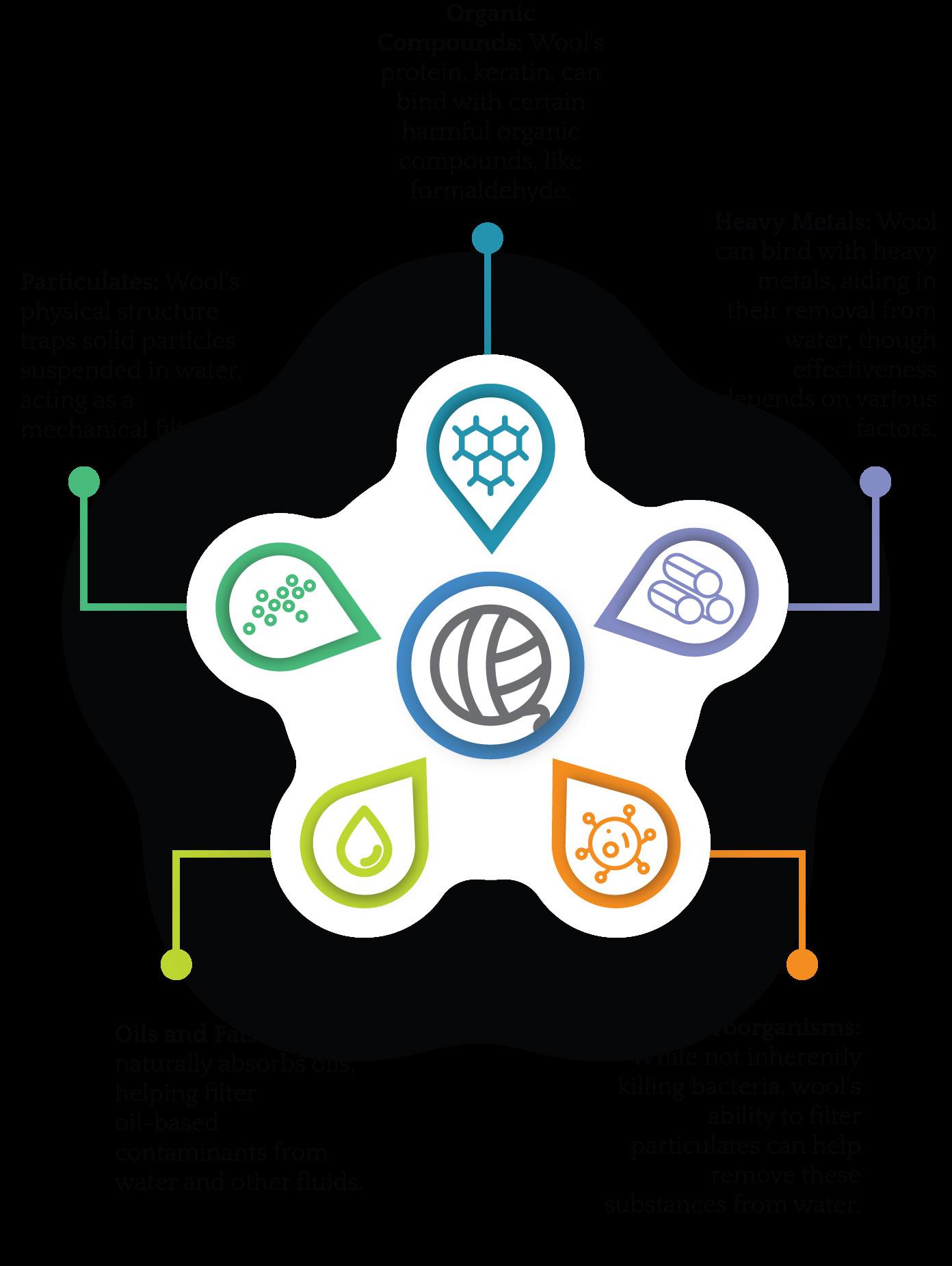
50 WOOL SYSTEMS WOOL FILTRATION SYSTEM
Integration into wool system


51 Mitch Williams
Generating engagement with underutilised demographics in response to the Australian shearing crisis.
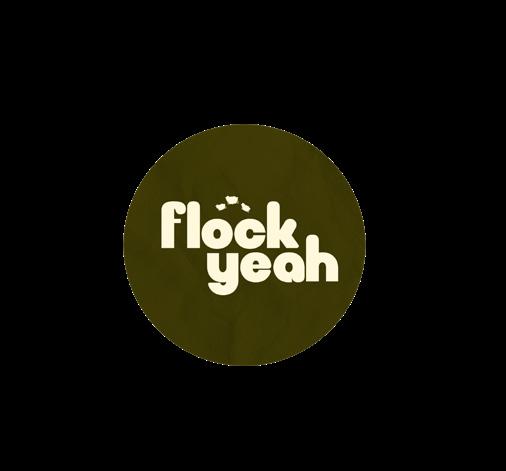

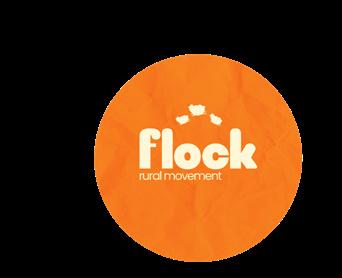

Designed as a series of wellness classes, the experience draws from the landscape on which it is held to showcase the beauty and pain of the wool industry.
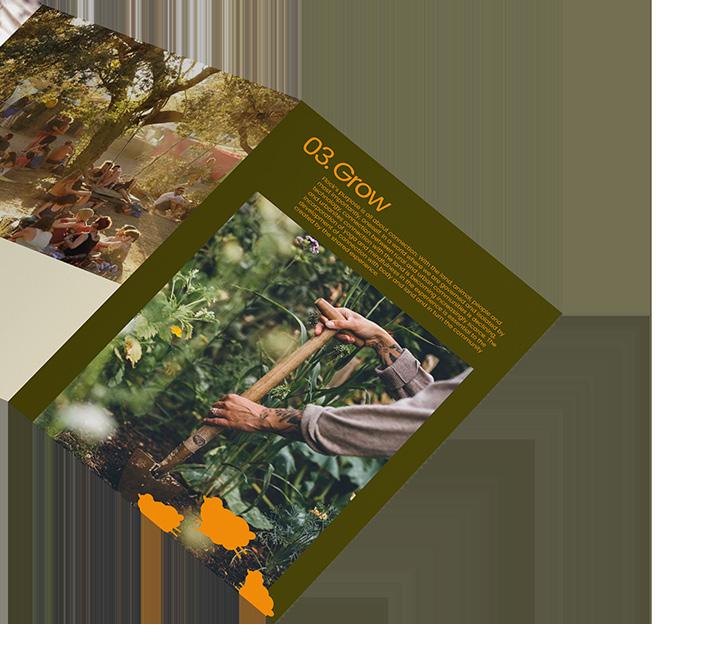
Flock allows for urbanites to see firsthand the physicality of the role, gain connection to land, and access to a
social environment which directly creates uplifting communities. Flock’s mission is to integrate new shearing technology + techniques such as shear-jitsu into a program to allow communities to learn by doing, putting themselves in the shoes of workers in the industry.
BARRIERS: Factors which are impacting the influx of new workers within the industry.
By doing this the experience aims to provide a clear view on how physically hard and yet how rewarding these roles are. It creates starting points for conversations by integrating new people together, lessening the disconnect found between urban and
Mia Woodfall
Seasonality Urbanisation Perception
Workplace culture Working conditions Physical work
PROJECT NAME

Design program, 3rd year, semester one, 2023
STUDENTS
Toni Baker
Bella Briggs
Shayana Canning
Hayden Clark
Jacquie Del Pio
Lewis Dilger
Lorena Duarte Hernandez
Amy Hilliard
Kayne Jestrimski
Studio Lead: Vanessa Ward
Tutors: Wendy Fountain & Ali Kerr
In collaboration with Waverley Mills: David Giles-Kaye & Rina Bernabei
Cover artwork: Iman McGregor
Georgia Maginnity
Iman McGregor
Brittany Nebbs
Kim Anh Nguyen
Lily Proctor
Ollie Walker
Mitchell Williams
Mia Woodfall
54 WOOL
SYSTEMS
WOOL
SYSTEMS


























 Jacquie Del Pio
Jacquie Del Pio


















 Zooming in, from one ‘reality’ to another.
Zooming in, from one ‘reality’ to another.












